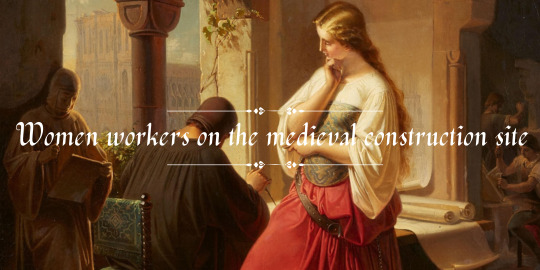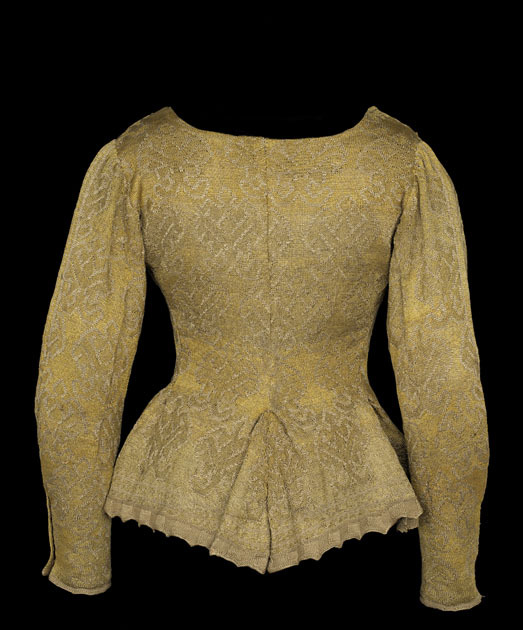#early sixteenth century
Photo

Rosso Fiorentino, Playing Putto, 1518. Oil on panel
2K notes
·
View notes
Text

Reference drawing of Juana I of Castile for the Tomb of Maximillian I by Jörg Kölderer (1522)
#peep the little pomegranate🥹#juana i of castile#juana of castile#joanna of castile#juana la loca#maximilian i#art#art history#history of art#drawing#northern renaissance art#northern renaissance#renaissance art#renaissance#renaissance history#16th century art#16th century#sixteenth century#16th century fashion#1500s#history#holy roman empire#holy roman emperor#tomb#early modern#flemish art#Flanders#netherlands#netherlandish art#austrian art
453 notes
·
View notes
Text

Barbara Longhi (Italian, 1552-1638): Saint Justina of Padua (via Dorotheum)
#Barbara Longhi#Saint Justina of Padua#early women painters#early women artists#sixteenth century#seventeenth century#italian painters#religious art#women artists#women painters#art#painting
153 notes
·
View notes
Text
I should be working on my dissertation, and have been, but I thought it'd be fun (for me :P) to loop you all in somehow. Therefore I bring you a very silly poll!
*best means whatever it means to you; feel free to propagandize
**yes, I deliberately excluded Shakespeare (from the poll, not the dissertation, lol)
#anghraine babbles#poll nonsense#ivory tower blogging#dissertation hell#william wordsworth#john ford#daniel defoe#thomas middleton#john webster#samuel johnson#edmund spenser#samuel richardson#michel de montaigne#henry fielding#olaudah equiano#jonathan swift#renaissance blogging#(read: early modern blogging but i'm too lazy to change my original tag)#eighteenth century blogging#sixteenth century blogging#seventeenth century blogging
24 notes
·
View notes
Text
Trying to do research and allow me to go all Ramsay Gordon here for a sec:
FOR THE LAST TIME, "1510" "1504" etc is NOT "early 15th century". It's the sixteenth. Sixteenth century. Sixteenth. 16. For fuck's sakes learn to use dates correctly I am tired of following up leads only to find out the metadata was off by a freaking century.
I don't know what kind of history class y'all had but I'm pretty sure it included this.
Also, 1900's does not mean "entire twentieth century" it means 1900 to 1910. If you want to say 20th century say 20th century. And so on.
#rant#history#art history#the real dark academia#goddammit this is the seventh “early 15th century” painting of Lucretia i find that's actually sixteenth century. COME ON.#pet peeve
14 notes
·
View notes
Text
ℜ𝔞𝔦𝔫𝔟𝔬𝔴 - 𝔖𝔦𝔵𝔱𝔢𝔢𝔫𝔱𝔥 ℭ𝔢𝔫𝔱𝔲𝔯𝔶 𝔊𝔯𝔢𝔢𝔫𝔰𝔩𝔢𝔢𝔳𝔢𝔰
#Rainbow#On Stage#Sixteenth Century Greensleeves#Release date:#July 7th#1977#Live album#Genre:#Hard Rock/Heavy Metal#Themes:#Fantasy#Rock (early); Relationships#Love#USA
6 notes
·
View notes
Text

"Got milk?"
2 notes
·
View notes
Text

"Women could be found working on construction sites, if only occasionally, including in specialized roles such as carpenters and masons. The research is found in the article, “Appropriate to Her Sex?” Women’s Participation on the Construction Site in Medieval and Early Modern Europe,” by Shelley E. Roff.
She surveyed a wide variety of records from throughout Western Europe, including tax records, inventories of wages paid on construction sites, and municipal accounts, and discovered numerous instances of women working alongside men on construction sites as far back at the 13th century. Most of these women were employed as day laborers, carrying out tasks such as moving water and building supplies around the sites, digging ditches and serving as assistants to bricklayers and stonemasons. For example, in the Spanish city of Seville during the 14th century, women were hired to dig trenches for the foundation of a new city wall, while at the nearby city of Toledo, one or two women were hired each day for the construction of the city’s cathedral, where they gathered lime and worked on the roof. Meanwhile in the French city of Toulouse, almost half the laborers working on the Perigord college site were women. Ross also finds several examples from England and Germany.
Roff notes that previous historians have seen many examples of women working on construction sites in their research, but they had believed that these were just abnormal exceptions caused by economic crises, or because the male population had been killed off through war or disease. But her new study suggests that women construction workers were more than just odd occurences. She explains that “the expansion of urban centers starting in the thirteenth century set off a trend of increasing female employment for day laborers and in the crafts, which only began to contract on occasion for women working in the crafts in the sixteenth century with ensuing economic crises.”
She also notes that in almost all accounts surveyed, the women were paid at a lower rate than the men, which would make the “a cost-effective solution” for site supervisors looking for ways to reduce expenses. The women who took these jobs would have come from society’s poor – those women who could not maintain their households and families just from their husbands’ (if they had one) income.
Roff also finds records showing women taking part in specialized building trades. In London in 1383, Katherine Lightfoot is recorded as the supplier of 2,000 painted tiles for bath in the King’s palace. Meanwhile, tax records from Paris during the years 1296 and 1313 reveal the existence of two female masons, a tiler and a plasterer. These women were not poorer individuals, rather they were the wives of male craftsman, and in some cases their widows. The 15th-century French writer Christine de Pizan noted in her book The Treasury of the City of Ladies that craftswomen, “should learn all the shop details so that she can properly supervise the workers when her husband is away or not paying attention.”
Women workers could be found on the medieval construction site, Medievalists.net
#history#women in history#women's history#working women#historyedit#middle ages#medieval women#medieval history#european history#french history#spanish history#historical#historyblr
585 notes
·
View notes
Text


Jacket
c.1630-1650
Italy or England
Several examples of knitted jackets or waistcosts survive in museum collections are waistcoats, with well-known examples in the Victoria and Albert Museum, London (473-1893, 346-1898, 106-1899 and 807-1904). Both men and women wore these items of clothing either as undergarments during the day or as informal déshabillé or undress at home in the evening to provide additional warmth. These items tend to fall into two categories: Italian waistcoats that open down the front, sometimes known as Florentine waistcoats, and those that pulled over the head. Italian waistcoats were knitted using one or two colours of silk yarn, in imitation of patterns found on woven silks, the effect often enhanced with the use of purl stitches. The fine gauge of these waistcoats suggests that they were hand-knitted in professional workshops, using extremely fine metal knitting needles, known as ‘wires’, for wealthy classes to buy as ready-to-wear clothing. The garment is constructed from rectangular knitted sections; two front panels, two back panels and two sleeves. Several have triangular gores inserted to provide additional width over the hips, at home by the wearer or a member of their household. Their name suggests that they were made in Italy and exported to northern Europe, but it is now known that fine silk yarns were imported from Naples to London from the late sixteenth century to supply the native knitting industry.
Because knitted waistcoats were for informal wear there are no known sources showing them being worn, making it hard to give them a more specific date. They appear to have originated at the beginning of the seventeenth century. Lady Elizabeth Howard, the wife of Lord William Howard (1563–1640) ordered ‘a pound of woosted for wastecotes’ for 9 shillings in 1618 and the Danish Royal family used knitted silk waistcoats for children’s shrouds during this period. Knitted waistcoats continued to be worn throughout the century. There are records of waistcoats being relined during the course of their use. Sir Thomas Isham (1656/7–81) is billed £1 5s 6d from his tailor for ‘new Lining A Purple and gold Silke knit wastcoate’ in April 1680. There are continuing references to them also in the early eighteenth century, including a London newspaper report of the theft of a ‘green silk knit waistcoat with gold and silver flowers all over it’ in 1712.
Glasgow Museums (ID Number: 29.126)
#knitwear#fashion history#historical fashion#17th century#stuart era#1630s#1640s#1650s#silk#yellow#italy#england#glasgow museums
223 notes
·
View notes
Text
Pentiment's Complete Bibliography, with links to some hard-to-find items:
I've seen some people post screenshots of the game's bibliography, but I hadn't found a plain text version (which would be much easier to work from), so I put together a complete typed version - citation style irregularities included lol. I checked through the full list and found that only four of the forty sources can't be found easily through a search engine. One has no English translation and I'm not even close to fluent enough in German to be able to actually translate an academic article, so I can't help there. For the other three (a museum exhibit book, a master's thesis, and portions of a primary source that has not been entirely translated into English), I tracked down links to them, which are included with their entries on the list.
If you want to read one of the journal articles but can't access it due to paywalls, try out 12ft.io or the unpaywall browser extension (works on Firefox and most chromium browsers). If there's something you have interest in reading but can't track down, let me know, and I can try to help! I'm pretty good at finding things lmao
Okay, happy reading, love you bye
Beach, Alison I. Women as Scribes: Book Production and Monastic Reform in Twelfth-Century Bavaria. Cambridge Univeristy Press, 2004.
Berger, Jutta Maria. Die Geschichterder Gastfreundschaft im hochmittel alterlichen Monchtum: die Cistercienser. Akademie Verlag GmbH, 1999. [No translation found.]
Blickle, Peter. The Revolution of 1525. Translated by Thomas A. Brady, Jr. and H.C. Erik Midelfort. The Johns Hopkins University Press, 1985.
Brady, Thomas A., Jr. “Imperial Destinies: A New Biography of the Emperor Maximilian I.” The Journal of Modern History, vol 62, no. 2., 1990. pp.298-314.
Brandl, Rainer. “Art or Craft: Art and the Artist in Medieval Nuremberg.” Gothic and Renaissance Art in Nuremberg 1300-1550. The Metropolitan Museum of Art, 1986. [LINK]
Byars, Jana L., “Prostitutes and Prostitution in Late Medieval Bercelona.” Masters Theses. Western Michigan University, 1997. [LINK]
Cashion, Debra Taylor. “The Art of Nikolaus Glockendon: Imitation and Originality in the Art of Renaissance Germany.” Journal of Historians of Netherlandish Art, vol 2, no. 1-2, 2010.
de Hamel, Christopher. A History of Illuminated Manuscripts. Phaidon Press Limited, 1986.
Eco, Umberto. The Name of the Rose. Translated by William Weaver. Mariner Books, 2014.
Eco, Umberto. Baudolino. Translated by William Weaver. Mariner Books, 2003.
Fournier, Jacques. “The Inquisition Records of Jacques Fournier.” Translated by Nancy P. Stork. Jan Jose Univeristy, 2020. [LINK]
Geary, Patrick. “Humiliation of Saints.” In Saints and their cults: studies in religious sociology, folklore, and history. Edited by Stephen Wilson. Cambridge University Press, 1985. pp. 123-140
Harrington, Joel F. The Faithrul Executioner: Life and Death, Honor and Shame in the Turbulent Sixteenth Century. Farrar, Straus and Giroux, 2013.
Hertzka, Gottfired and Wighard Strehlow. Grosse Hildegard-Apotheke. Christiana-Verlag, 2017.
Hildegard von Bingen. Physica. Edited by Reiner Hildebrandt and Thomas Gloning. De Gruyter, 2010.
Julian of Norwich. Revelations of Divine Love. Translated by Barry Windeatt. Oxford Univeristy Press, 2015.
Karras, Ruth Mazo. Sexuality in Medieval Europe: Doing Unto Others. Routledge, 2017.
Kerr, Julie. Monastic Hospitality: The Benedictines in England, c.1070-c.1250. Boudell Press, 2007.
Kieckhefer, Richard. Forbidden rites: a necromancer’s manual of the fifteenth century. Sutton, 1997.
Kuemin, Beat and B. Ann Tlusty, The World of the Tavern: Public Houses in Early Modern Europe. Routledge, 2017.
Ilner, Thomas, et al. The Economy of Duerrnberg-Bei-Hallein: An Iron Age Salt-mining Center in the Austrian Alps. The Antiquaries Journal, vol 83, 2003. pp. 123-194
Lang, Benedek. Unlocked Books: Manuscripts of Learned Magic in the Medieval Libraries of Central Europe. The Pennsylvania State University Press, 2008
Lindeman, Mary. Medicine and Society in Early Modern Europe. Cambridge University Press, 2019.
Lowe, Kate. “’Representing’ Africa: Ambassadors and Princes from Christian Africa to Renaissance Italy and Portugal, 1402-1608.” Transactions of the Royal Historical Society Sixth Series, vol 17, 2007. pp. 101-128
Meyers, David. “Ritual, Confession, and Religion in Sixteenth-Century Germany.” Archiv fuer Reformationsgenshichte, vol. 89, 1998. pp. 125-143.
Murat, Zuleika. “Wall paintings through the ages: the medieval period (Italy, twelfth to fifteenth century).” Archaeological and Anthropological Sciences, vol 23, no. 191. Springer, October 2021. pp. 1-27.
Overty, Joanne Filippone. “The Cost of Doing Scribal Business: Prices of Manuscript Books in England, 1300-1483.” Book History 11, 2008. pp. 1-32.
Page, Sophie. Magic in the Cloister: Pious Motives, Illicit Interests, and Occullt Approaches to the Medieval Universe. The Pennsylvania State University Press, 2013.
Park, Katharine. “The Criminal and the Saintly Body: Autopsy and Dissectionin Renaissance Italy.” Renaissance Quarterly, vol 47, no. 1, Spring 1994. pp. 1-33.
Rebel, Hermann. Peasant Classes: The Bureaucratization of Property and Family Relations under Early Habsburg Absolutism, 1511-1636. Princeton University Press, 1983.
Rublack, Ulinka. “Pregnancy, Childbirth, and the Female Body in Early Modern Germany.” Past & Present,vol. 150, no. 1, February 1996.
Salvador, Matteo. “The Ethiopian Age of Exploration: Prester John’s Discovery of Europe, 1306-1458.” Journal of World History, vol. 21, no. 4, 2011. pp.593-627.
Sangster, Alan. “The Earliest Known Treatise on Double Entry Bookkeeping by Marino de Raphaeli.” The Accounting Historians Journal, vol. 42, no. 2, 2015. pp. 1-33.
Throop, Priscilla. Hildegarde von Bingen’s Physica: The Complete English Translation of Her Classic Work on Health and Healing. Healing Arts Press, 1998.
Usher, Abbott Payson. “The Origins of Banking: The Brimitive Bank of Deposit, 1200-1600.” The Economic History Review, vol. 4, no. 4. 1934. pp.399-428.
Waldman, Louis A. “Commissioning Art in Florence for Matthias Corvinus: The Painter and Agent Alexander Formoser and his Sons, Jacopo and Raffaello del Tedesco.” Italy and Hungary: Humanism and Art in the Early Renaissance. Edited by Peter Farbaky and Louis A. Waldman, Villa I Tatti, 2011. pp.427-501.
Wendt, Ulrich. Kultur and Jagd: ein Birschgang durch die Geschichte. G. Reimer, 1907.
Whelan, Mark. “Taxes, Wagenburgs and a Nightingale: The Imperial Abbey of Ellwangen and the Hussite Wars, 1427-1435.” The Journal of Ecclesiastical History, vol. 72, no. 4, 2021, pp.751-777.
Wiesner-Hanks, Merry E. Women and Gender in Early Modern Europe. Cambridge University Press, 2008.
Yardeni, Ada. The Book of Hebrew Script: History, Palaeography, Script Styles, Calligraphy & Design. Tyndale House Publishers, 2010.
328 notes
·
View notes
Text






JSTOR Articles on the History of Witchcraft, Witch Trials, and Folk Magic Beliefs
This is a partial of of articles on these subjects that can be found in the JSTOR archives. This is not exhaustive - this is just the portion I've saved for my own studies (I've read and referenced about a third of them so far) and I encourage readers and researchers to do their own digging. I recommend the articles by Ronald Hutton, Owen Davies, Mary Beth Norton, Malcolm Gaskill, Michael D. Bailey, and Willem de Blecourt as a place to start.
If you don't have personal access to JSTOR, you may be able to access the archive through your local library, university, museum, or historical society.
Full text list of titles below the cut:
'Hatcht up in Villanie and Witchcraft': Historical, Fiction, and Fantastical Recuperations of the Witch Child, by Chloe Buckley
'I Would Have Eaten You Too': Werewolf Legends in the Flemish, Dutch and German Area, by Willem de Blecourt
'The Divels Special Instruments': Women and Witchcraft before the Great Witch-hunt, by Karen Jones and Michael Zell
'The Root is Hidden and the Material Uncertain': The Challenges of Prosecuting Witchcraft in Early Modern Venice, by Jonathan Seitz
'Your Wife Will Be Your Biggest Accuser': Reinforcing Codes of Manhood at New England Witch Trials, by Richard Godbeer
A Family Matter: The CAse of a Witch Family in an 18th-Century Volhynian Town, by Kateryna Dysa
A Note on the Survival of Popular Christian Magic, by Peter Rushton
A Note on the Witch-Familiar in Seventeenth Century England, by F.H. Amphlett Micklewright
African Ideas of Witchcraft, by E.G. Parrinder
Aprodisiacs, Charms, and Philtres, by Eleanor Long
Charmers and Charming in England and Wales from the Eighteenth to the Twentieth Century, by Owen Davies
Charming Witches: The 'Old Religion' and the Pendle Trial, by Diane Purkiss
Demonology and Medicine in the Sixteenth and Seventeenth Centuries, by Sona Rosa Burstein
Denver Tries A Witch, by Margaret M. Oyler
Devil's Stones and Midnight Rites: Megaliths, Folklore, and Contemporary Pagan Witchcraft, by Ethan Doyle White
Edmund Jones and the Pwcca'r Trwyn, by Adam N. Coward
Essex County Witchcraft, by Mary Beth Norton
From Sorcery to Witchcraft: Clerical Conceptions of Magic in the Later Middle Ages, by Michael D. Bailey
German Witchcraft, by C. Grant Loomis
Getting of Elves: Healing, Witchcraft and Fairies in the Scottish Witchcraft Trials, by Alaric Hall
Ghost and Witch in the Sixteenth and Seventeenth Centuries, by Gillian Bennett
Ghosts in Mirrors: Reflections of the Self, by Elizabeth Tucker
Healing Charms in Use in England and Wales 1700-1950, by Owen Davies
How Pagan Were Medieval English Peasants?, by Ronald Hutton
Invisible Men: The Historian and the Male Witch, by Lara Apps and Andrew Gow
Johannes Junius: Bamberg's Famous Male Witch, by Lara Apps and Andrew Gow
Knots and Knot Lore, by Cyrus L. Day
Learned Credulity in Gianfrancesco Pico's Strix, by Walter Stephens
Literally Unthinkable: Demonological Descriptions of Male Witches, by Lara Apps and Andrew Gow
Magical Beliefs and Practices in Old Bulgaria, by Louis Petroff
Maleficent Witchcraft in Britian since 1900, by Thomas Waters
Masculinity and Male Witches in Old and New England, 1593-1680, by E.J. Kent
Methodism, the Clergy, and the Popular Belief in Witchcraft and Magic, by Owen Davies
Modern Pagan Festivals: A Study in the Nature of Tradition, by Ronald Hutton
Monstrous Theories: Werewolves and the Abuse of History, by Willem de Blecourt
Neapolitan Witchcraft, by J.B. Andrews and James G. Frazer
New England's Other Witch-Hunt: The Hartford Witch-Hunt of the 1660s and Changing Patterns in Witchcraft Prosecution, by Walter Woodward
Newspapers and the Popular Belief in Witchcraft and Magic in the Modern Period, by Owen Davies
Occult Influence, Free Will, and Medical Authority in the Old Bailey, circa 1860-1910, by Karl Bell
Paganism and Polemic: The Debate over the Origins of Modern Pagan Witchcraft, by Ronald Hutton
Plants, Livestock Losses and Witchcraft Accusations in Tudor and Stuart England, by Sally Hickey
Polychronican: Witchcraft History and Children, interpreting England's Biggest Witch Trial, 1612, by Robert Poole
Publishing for the Masses: Early Modern English Witchcraft Pamphlets, by Carla Suhr
Rethinking with Demons: The Campaign against Superstition in Late Medieval and Early Modern Europe from a Cognitive Perspective, by Andrew Keitt
Seasonal Festivity in Late Medieval England, Some Further Reflections, by Ronald Hutton
Secondary Targets: Male Witches on Trial, by Lara Apps and Andrew Gow
Some Notes on Modern Somerset Witch-Lore, by R.L. Tongue
Some Notes on the History and Practice of Witchcraft in the Eastern Counties, by L.F. Newman
Some Seventeenth-Century Books of Magic, by K.M. Briggs
Stones and Spirits, by Jane P. Davidson and Christopher John Duffin
Superstitions, Magic, and Witchcraft, by Jeffrey R. Watt
The 1850s Prosecution of Gerasim Fedotov for Witchcraft, by Christine D. Worobec
The Catholic Salem: How the Devil Destroyed a Saint's Parish (Mattaincourt, 1627-31), by William Monter
The Celtic Tarot and the Secret Tradition: A Study in Modern Legend Making, by Juliette Wood
The Cult of Seely Wights in Scotland, by Julian Goodare
The Decline of Magic: Challenge and Response in Early Enlightenment England, by Michael Hunter
The Devil-Worshippers at the Prom: Rumor-Panic as Therapeutic Magic, by Bill Ellis
The Devil's Pact: Diabolic Writing and Oral Tradition, by Kimberly Ball
The Discovery of Witches: Matthew Hopkins' Defense of his Witch-hunting Methods, by Sheilagh Ilona O'Brien
The Disenchantment of Magic: Spells, Charms, and Superstition in Early European Witchcraft Literature, by Michael D. Bailey
The Epistemology of Sexual Trauma in Witches' Sabbaths, Satanic Ritual Abuse, and Alien Abduction Narratives, by Joseph Laycock
The European Witchcraft Debate and the Dutch Variant, by Marijke Gijswijt-Hofstra
The Flying Phallus and the Laughing Inquisitor: Penis Theft in the Malleus Maleficarum, by Moira Smith
The Framework for Scottish Witch-Hunting for the 1590s, by Julian Goodare
The Imposture of Witchcraft, by Rossell Hope Robbins
The Last Witch of England, by J.B. Kingsbury
The Late Lancashire Witches: The Girls Next Door, by Meg Pearson
The Malefic Unconscious: Gender, Genre, and History in Early Antebellum Witchcraft Narratives, by Lisa M. Vetere
The Mingling of Fairy and Witch Beliefs in Sixteenth and Seventeenth Century Scotland, by J.A. MacCulloch
The Nightmare Experience, Sleep Paralysis, and Witchcraft Accusations, by Owen Davies
The Pursuit of Reality: Recent Research into the History of Witchcraft, by Malcolm Gaskill
The Reception of Reginald Scot's Discovery of Witchcraft: Witchcraft, Magic, and Radical Religions, by S.F. Davies
The Role of Gender in Accusations of Witchcraft: The Case of Eastern Slovenia, by Mirjam Mencej
The Scottish Witchcraft Act, by Julian Goodare
The Werewolves of Livonia: Lycanthropy and Shape-Changing in Scholarly Texts, 1550-1720, by Stefan Donecker
The Wild Hunter and the Witches' Sabbath, by Ronald Hutton
The Winter Goddess: Percht, Holda, and Related Figures, by Lotta Motz
The Witch's Familiar and the Fairy in Early Modern England and Scotland, by Emma Wilby
The Witches of Canewdon, by Eric Maple
The Witches of Dengie, by Eric Maple
The Witches' Flying and the Spanish Inquisitors, or How to Explain Away the Impossible, by Gustav Henningsen
To Accommodate the Earthly Kingdom to Divine Will: Official and Nonconformist Definitions of Witchcraft in England, by Agustin Mendez
Unwitching: The Social and Magical Practice in Traditional European Communities, by Mirjam Mencej
Urbanization and the Decline of Witchcraft: An Examination of London, by Owen Davies
Weather, Prayer, and Magical Jugs, by Ralph Merrifield
Witchcraft and Evidence in Early Modern England, by Malcolm Gaskill
Witchcraft and Magic in the Elizabethan Drama by H.W. Herrington
Witchcraft and Magic in the Rochford Hundred, by Eric Maple
Witchcraft and Old Women in Early Modern Germany, by Alison Rowlands
Witchcraft and Sexual Knowledge in Early Modern England, by Julia M. Garrett
Witchcraft and Silence in Guillaume Cazaux's 'The Mass of Saint Secaire', by William G. Pooley
Witchcraft and the Early Modern Imagination, by Robin Briggs
Witchcraft and the Western Imagination by Lyndal Roper
Witchcraft Belief and Trals in Early Modern Ireland, by Andrew Sneddon
Witchcraft Deaths, by Mimi Clar
Witchcraft Fears and Psychosocial Factors in Disease, by Edward Bever
Witchcraft for Sale, by T.M. Pearce
Witchcraft in Denmark, by Gustav Henningsen
Witchcraft in Germany, by Taras Lukach
Witchcraft in Kilkenny, by T. Crofton Croker
Witchcraft in Anglo-American Colonies, by Mary Beth Norton
Witchcraft in the Central Balkans I: Characteristics of Witches, by T.P. Vukanovic
Witchcraft in the Central Balkans II: Protection Against Witches, by T.P. Vukanovic
Witchcraft Justice and Human Rights in Africa, Cases from Malawi, by Adam Ashforth
Witchcraft Magic and Spirits on the Border of Pennsylvania and West Virginia, by S.P. Bayard
Witchcraft Persecutions in the Post-Craze Era: The Case of Ann Izzard of Great Paxton, 1808, by Stephen A. Mitchell
Witchcraft Prosecutions and the Decline of Magic, by Edward Bever
Witchcraft, by Ray B. Browne
Witchcraft, Poison, Law, and Atlantic Slavery, by Diana Paton
Witchcraft, Politics, and Memory in Seventeeth-Century England, by Malcolm Gaskill
Witchcraft, Spirit Possession and Heresy, by Lucy Mair
Witchcraft, Women's Honour and Customary Law in Early Modern Wales, by Sally Parkin
Witches and Witchbusters, by Jacqueline Simpson
Witches, Cunning Folk, and Competition in Denmark, by Timothy R. Tangherlini
Witches' Herbs on Trial, by Michael Ostling
#witchcraft#witchblr#history#history of witchcraft#occult#witch trials#research#recommended reading#book recs#jstor
2K notes
·
View notes
Text

Albrecht Durer, Mary Amongst a Multitude of Animals, c.1503
387 notes
·
View notes
Text

Margaret of Austria as Mary Magdalene by Bernard van Orley
#it’s Margaret of Austria appreciation time!!!!#Margaret of Austria#archduchess#mary magdalene#art#northern renaissance art#northern renaissance#renaissance art#renaissance#16th century#16th century art#sixteenth century#portrait#portraits#netherlands#1500s#1500s art#early modern#st mary magdalene
21 notes
·
View notes
Text

Sofonisba Anguissola (Italian, ca. 1532-1625): Portrait of a noblewoman, possibly Aloisia de Luna Moncada, bust-length, wearing a black embroidered dress (via Dorotheum)
#Sofonisba Anguissola#early women artists#early women painters#women artists#women painters#art#painting#sixteenth century#seventeenth century#italian painters#portrait
164 notes
·
View notes
Text
As Tolkien often observed; “names often generate a story” and always nearly contributed or suggested something of the nature or personality of the character, thing or place that has been named. Yet the most intriguing name he has created in my opinion, is the main protagonist of “The Hobbit” Bilbo Baggins who is the hero of the classic tale, and despite being seen as such, his name holds interesting and contradicting connotations. For Baggins suggests harmless, humble and well- contented characters (though with criminal undertones!) Yet the name Bilbo suggests an individual who is sharp, intelligent and even dangerous….
The family name of Bilbo is “Baggins” which derives from a double source-the English Somerset surname Bagg, which means “moneybag” or “wealthy.” The term “Baggins" itself means “afternoon tea or snack between meals” and at first is appropriate in describing our well off hobbit. Initially he is presented as a mildly comic, home-loving, upper middle class “gentle hobbit” who seems harmless and composed enough, if given to some annoyance. He is mostly concerned with his mothers dishes, doilies, domestic comforts and food. However, once recruited by Thorin and his Company, we see the respectable gentle hobbit reveal his true colours- he is an excellent and highly skilled burglar.
Tolkien has maintained that his tales are often inspired by names and words from the real world, and indeed, in the jargon of the nineteenth-and early twentieth century criminal underworld there were a cluster of names around the term “bag” and forms of theft. “To bag” means to capture, to acquire, or to steal. “A baggage man” is an outlaw who carries off the loot and a “bagman” is the man who collects and distributes gold on the behalf of others by dishonest means or purposes.
His surname not only characterises himself, but also plots out the narrative for the story. For in the hobbit we discover Baggins is hired by Dwarves to bag the Arkenstone. He then becomes the baggage man who carries off the loot. When he realises Thorin has fallen under the gold sickness, he becomes the bagman and is dishonest to the newly crowned king, distributing the Arkenstone to Thrandruil and Bard. After the Battle Of The Five Armies he hands out the treasure to those who are rightfully in need of it, and thus ends him being the bagman.
Another aspect of Bilbo Baggins character can be revealed by the analysis of his first name. The word “Bilbo” entered the English language in the late sixteenth century as a name for a short and deadly piercing sword of the kind once made in the Spanish port city of Bilbao where the name derives from. This is an excellent description of Bilbo's elvish sword (often called a letter opener) named “Sting.” Found in the troll hoard, Bilbo's “bilbo” can pierce through any animal hide that would break any other sword. In The Hobbit however, it is the hero's sharp wit rather than his sword that gives Bilbo his sharpness. Bilbo's well-honed wits allow him to survive the journey and to trick monsters, a dragon and to get himself out of bad situations.
When we put these two names together as Bilbo Baggins, we fully understand the two aspects of his character, showing someone who is dangerously witty, but ultimately good and humble to a fault. If we want to dig deeper into how these names also affected the events of the Lord Of The Rings, one has to look no further than Frodo Baggins.
Along with the Baggins family name, further “baggage” is passed on to Bilbo's nephew and heir, Frodo Baggins who in the context of the one ring is a link to another underworld occupation; the bagger or the bag thief. This bagger or bag thief has nothing to do with baggage, but is derived from the French word bauge, meaning “ring.” A bagger then, is a thief who specialises in stealing rings by seizing a victim's hand and stripping off its rings. It had common usage in Britain's criminal underworld between 1890 to 1940. The Baggins name holds the idea and plot for both The Hobbit and Lord Of The Rings. For Bilbo's skill as a burglar, one might say that in the perspective of outsiders, the Baggins baggers of Bag End, Bilbo and Frodo, are naturally born ring thieves.
#tolkien#bilbo baggins#frodo baggins#bilbo#frodo#lotr meta#meta#analysis#linguistics#the hobbit#hobbit#hobbits#i spent way to long researching this#lotr#silm
1K notes
·
View notes
Text
Printed cotton day dress with sleeve inserts
American, ca. 1833

Frequently satirized by caricaturists, enormous gigot, or leg-of-mutton, sleeves were the defining characteristic of women's fashionable dress at the height of the Romantic period around 1830. Ballooning out from the shoulder and tapering tightly at the wrist, their exaggerated proportions deliberately evoked similarly voluminous sleeves of the late sixteenth century and enhanced the ideal hourglass silhouette with its small waist and full, rounded skirts. Crescent-shaped down-filled pads often kept the sleeves properly expanded; pinned to the corset underneath, they could be used interchangeably with different gowns.
Most unusually, this floral-printed cotton day dress retains its sized linen sleeve supports that were clearly intended to be worn with this dress. Attached to the interior shoulder seams with tape ties, they are an exceptionally rare survival of an undergarment with its original attire.
Although British cottons continued to be imported into the United States in the post-Revolutionary years, it may be that this sturdy twilled cotton with pink, blue, and green blossoms and meandering vines set off against a rich, brown ground is of American manufacture. By the 1820s, the domestic printed cotton industry had increased significantly from its tentative beginnings in late eighteenth and early nineteenth centuries, with large firms established in New England and along the Hudson River. Floral-patterned cottons were a perennial favorite for day dresses in the 1820s and 1830s, especially for the warmer months from spring to early fall. Probably made by the wearer herself rather than a professional seamstress, the gown and its sleeve inserts demonstrate that American women were well aware of, and followed as closely as possible, current fashions from abroad.
Cora Ginsburg
742 notes
·
View notes